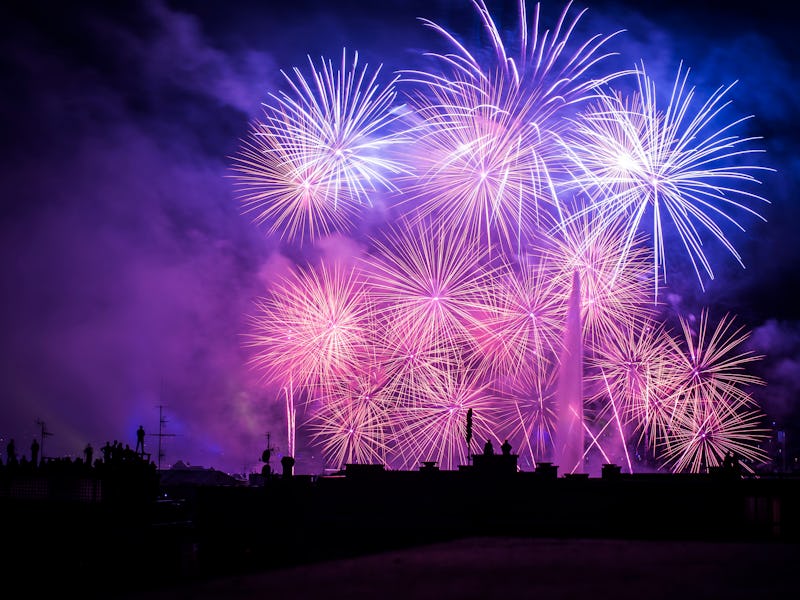The Chemistry Behind Why Blue Fireworks Are the Hardest Color to Make
Which can be a problem on the Fourth of July.

Patriotism in July is, as a great man once said, synonymous with blowing up a small part of America. The go-to choice for the job are fireworks, and the red and white we have down pat. But the blue. Blue fireworks, weirdly, after all these years, still vex the pyros, and point to the quirky chemistry underlying spectacular explosions.
Julie Heckman, the Executive Director of the American Pyrotechnics Association, told Inverse, “A deep, vibrant blue, remains the most difficult color to make.” Despite the basic components of fireworks being around for thousands of years, no one has found the perfect chemical formula for the right blue hue.
Even though humans started incorporating the color into art and other uses more than 6,000 years ago it remains a mystery to fireworks experts. It could be a major patriotic problem, but Heckman says it hasn’t spoiled fireworks celebrations. “In recent years the fireworks industry has shifted away from the traditional red, white, blue,” she told me, “and has focused on perfecting a softer palette of colors.”
To get all those distinctive colors, two main components are mixed and packed tightly together: an oxygen-rich chemical (otherwise known as an oxidizer) and a fuel source like sulfur or charcoal that burns. It isn’t just gunpowder we’re talking about, unless you want a standard exploding ball of fire, which, to be honest, is still pretty cool, if unsubtle.
After the fireworks shell is launched into the air, at a predetermined height a chemical reaction at a temperature above the standard boiling point causes the oxidizer and the fuel to mix. The product of that mixture is heat, giving off the vivid and explosive gleam we see in the sky every 4th of July, most likely to the strains of Lynyrd Skynyrd or some shit-kicking country singer who can rhyme red, white, and blue with “knocking back a couple brews” or something.
Technicians combine a recipe of oxidizers to get different colors out of each firework, with each color representing a different mixture of chemical compounds. Strontium compounds create the reds, aluminum or titanium metals create whites, sodium creates golds or yellows, calcium salts create oranges, and copper compounds give us blues. A normal fireworks shell can hold up to eight colors at once. None of these, it should be noted, run.
This is a snippet from a 2015 article by Sean Hutchinson.